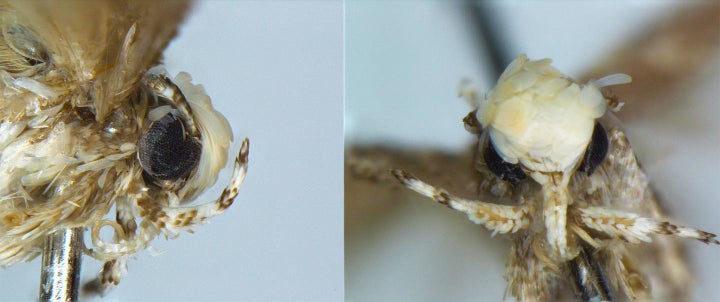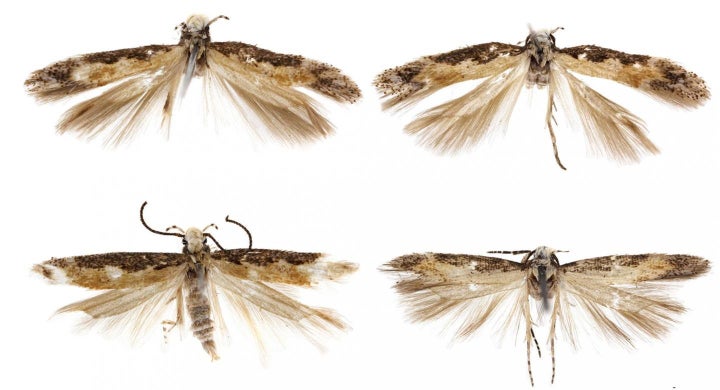A newly discovered species of moth received a fitting moniker, given the helmet-like cluster of yellow-white scales atop its head.
Meet Neopalpa donaldtrumpi, named after President-elect Donald Trump “because of the resemblance of the scales on the frons (head) of the moth to Mr. Trump’s hairstyle.”
And while the resemblance to Trump is uncanny, the visual similarity was not the main motivation behind the naming, Dr. Vazrick Nazari, the evolutionary biologist who discovered the species, told The Huffington Post in an email.

“With the new administration taking office very soon, and the uncertainties about what is going to happen to the [Environmental Protection Agency], I thought perhaps this would be a good opportunity to bring wider attention to the fact that we have so many fragile ecosystems and protected areas in the US that still house undiscovered and undescribed species of plants and animals, and we absolutely need to continue protecting them,” Nazari said.
Nazari published the details of his discovery in the latest issue of the journal ZooKeys.
Nazari discovered the species while observing moth specimens from the Bohart Museum of Entomology at the University of California, Davis. Within the collection, he found a few moth specimens with characteristics that differed from the previously known species in a genus of twirler moths.
Although both species in the genus share a habitat, spanning parts of the U.S. state of California and Baja California, Mexico, it became clear to Nazari after thorough analysis that Neopalpa donaldtrumpi was a new species.

Nazari has thoroughly observed a number of Neopalpa donaldtrumpi specimens, but says much still remains to be learned about how they live in the wild.
“As of yet we do not know anything about how this moth lives,” Nazari told HuffPost. “What plants do its caterpillars feed on, what do the egg, larvae and pupae look like?”
The unknown, Nazari said, is precisely why he wants to bring attention to this species and its fragile habitat. “There is still so much to be discovered, and that makes the protection of the fragile dune habitat that are home to this moth all the more important.”

